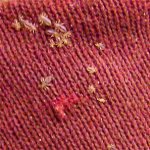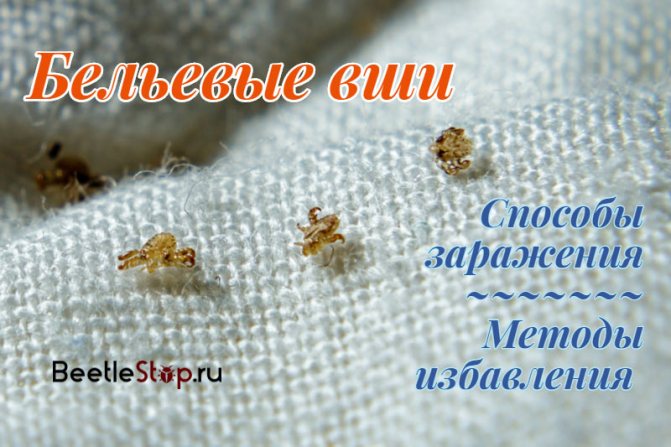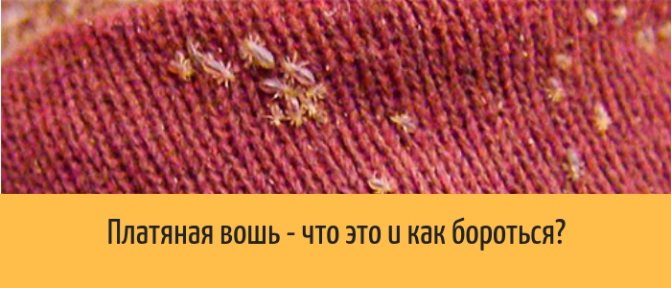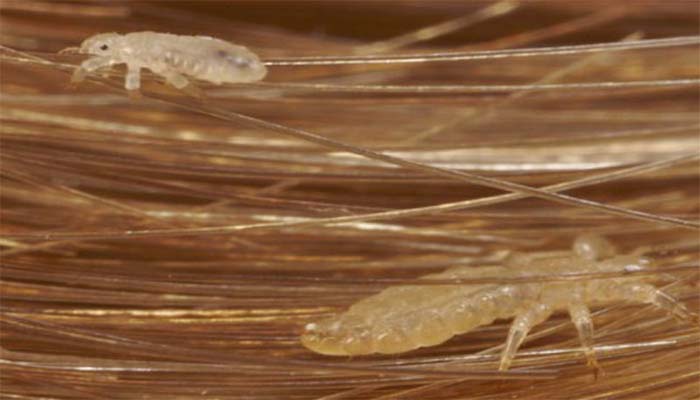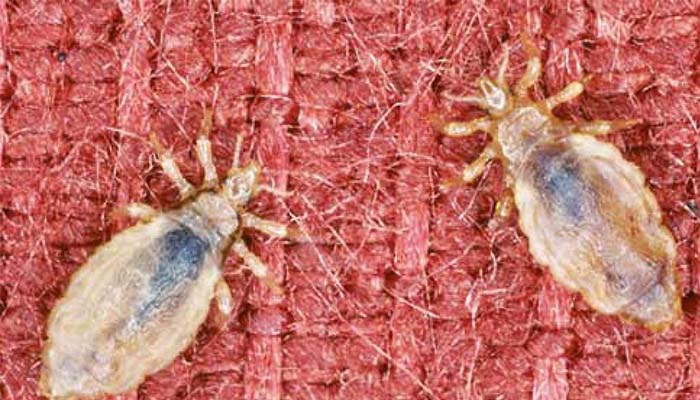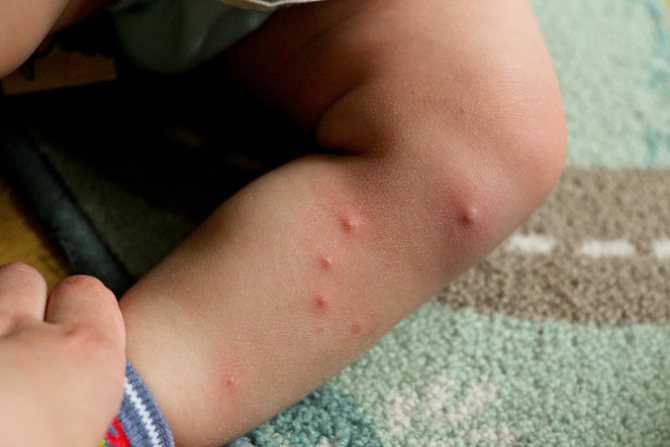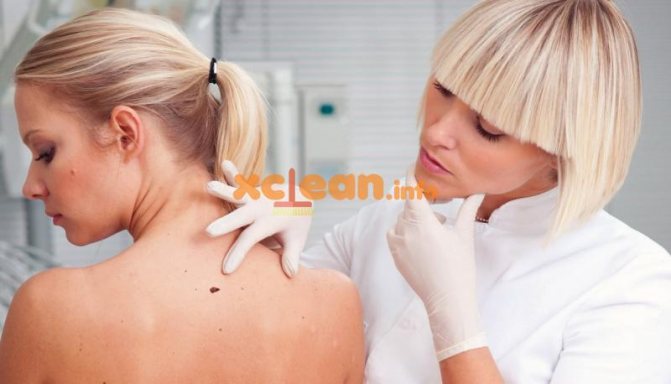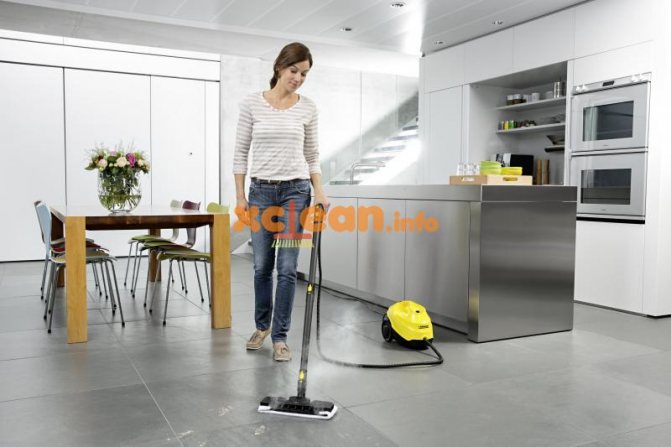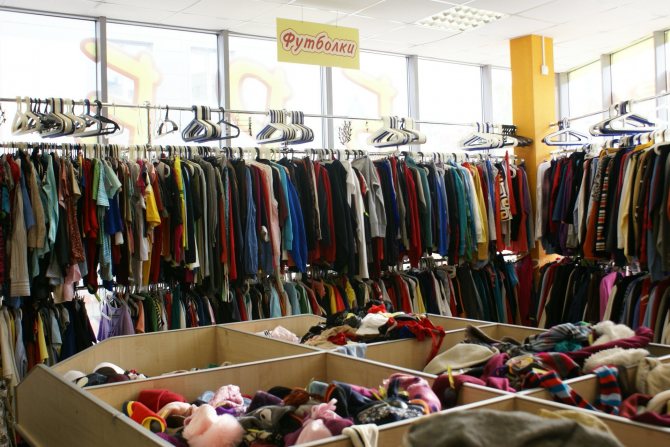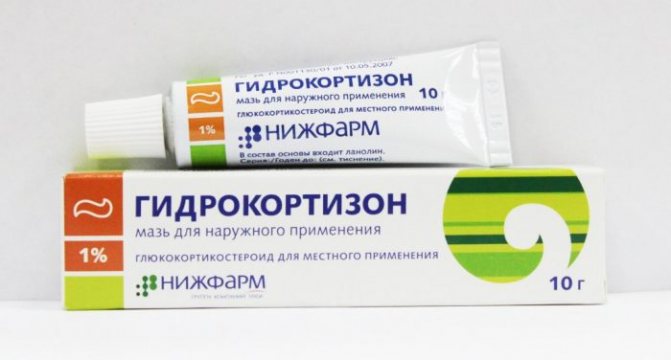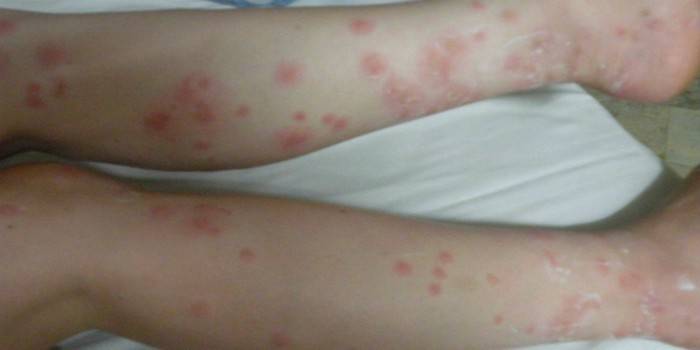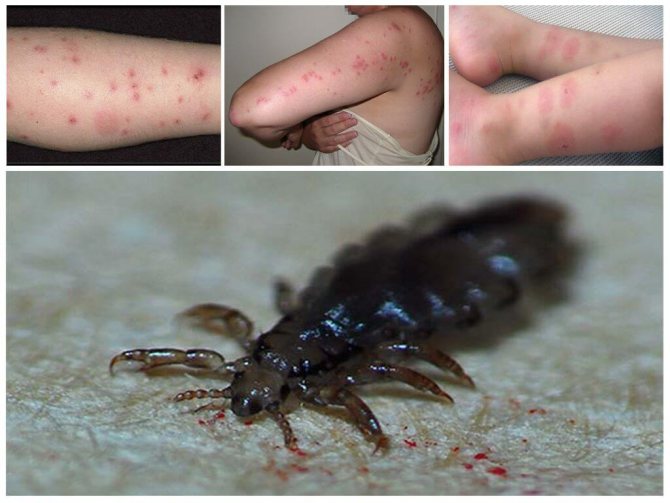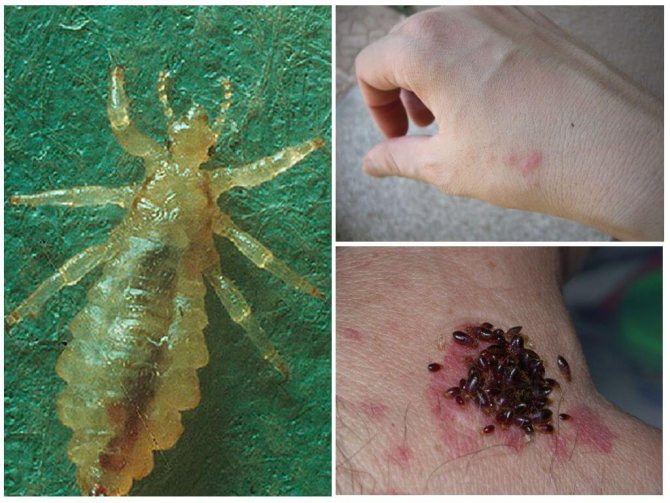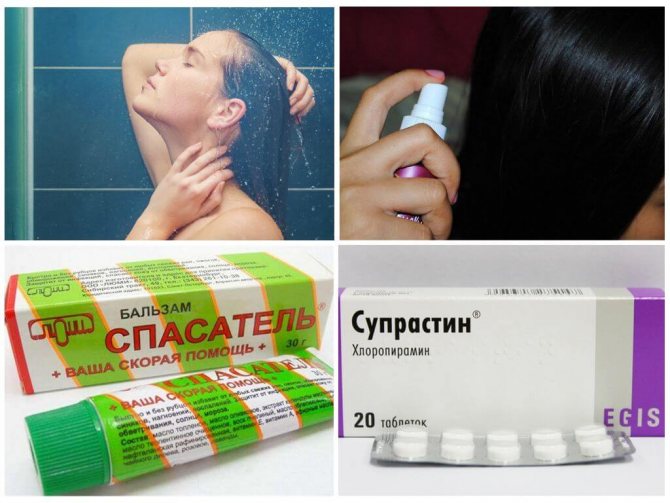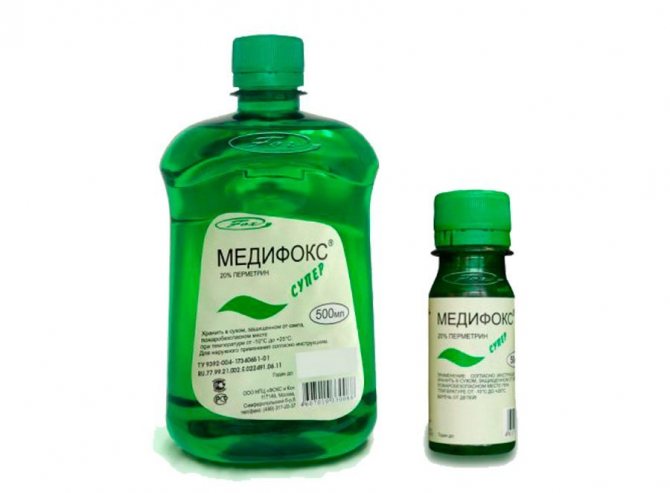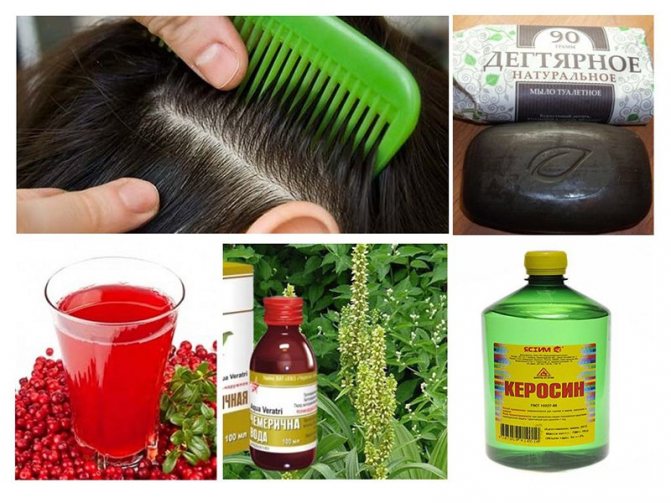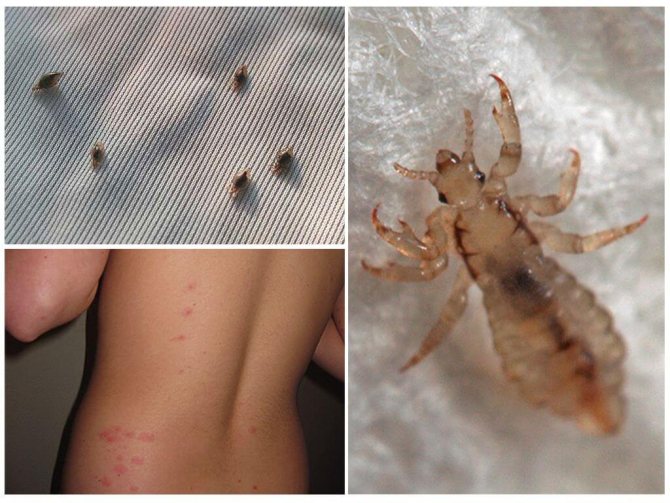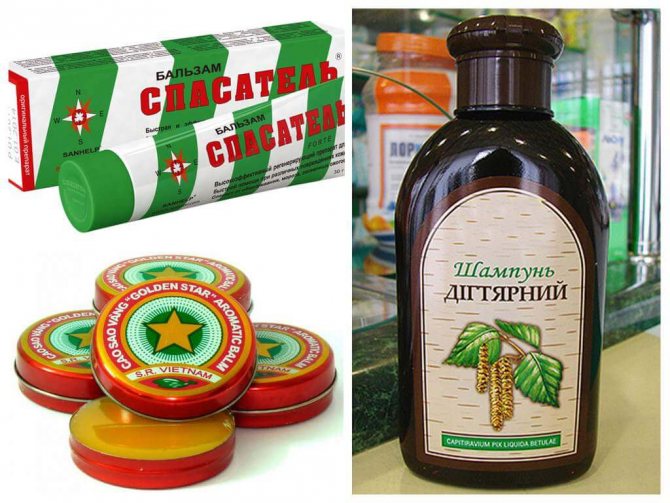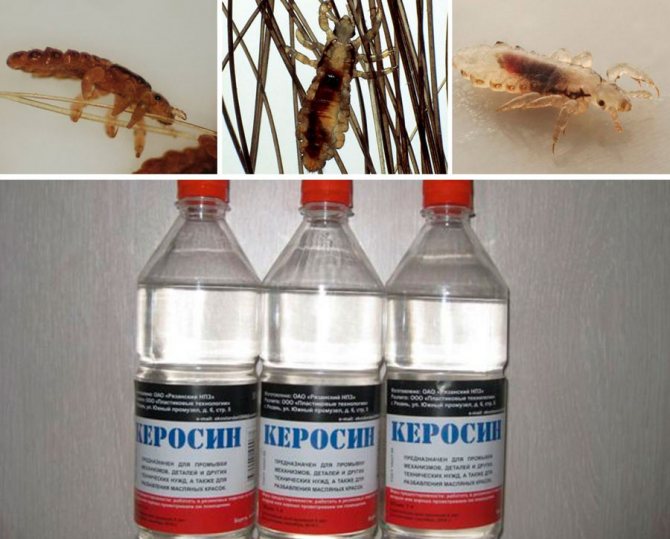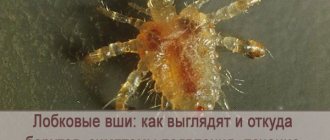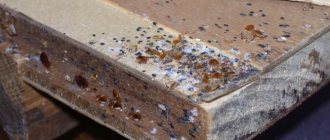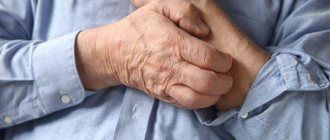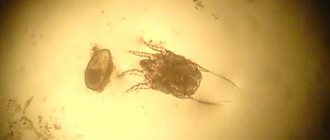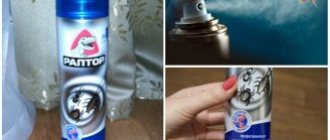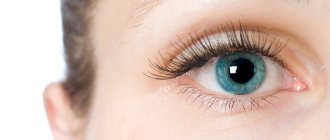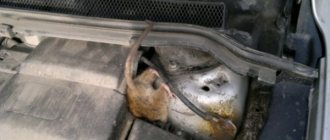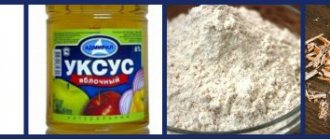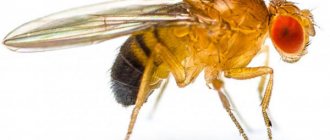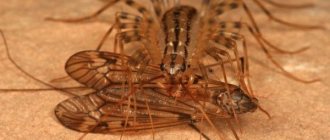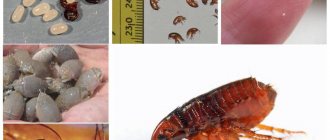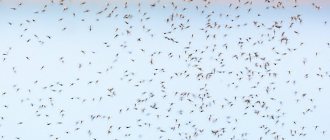Body lice are quite specific parasites. Generally speaking, they do not even belong to a separate species, but are just an evolutionary form of head lice that have changed their habits and lifestyle only for the short period that people dressed in clothes live on Earth.
Body lice cannot live in the hair - their paws are not adapted for this, and therefore they usually do not linger directly on a person's head. But they managed to perfectly adapt to living in clothes - in its folds, between seams, in folds and pockets - confidently clinging to the fabric itself.
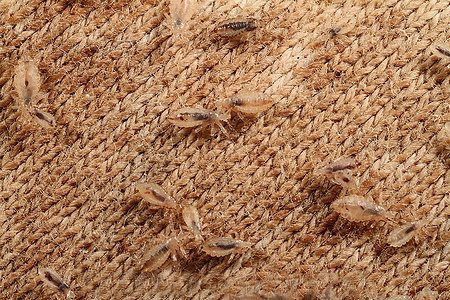
In general, the body louse is a parasite that lives in clothes. Here, body lice have gained several advantages: they have more space to feed, they are safer than on the head, and in more comfortable conditions in general. After all, a person has a more stable microclimate under his clothes than on his head. But this adaptability to parasitism on clothes also has its drawbacks, which we will talk about below.
Who are linen lice, where do they live and what do they eat?
Linen, bed lice (biologists classify it as a body louse) are tiny parasites that can be confused with a small bug. Outwardly, they resemble head lice, except that the inhabitants of the clothes on their paws do not have a mechanism that allows them to hold onto their hair. In the process of evolution due to a change in habitat, they have lost this adaptation. It can be distinguished from other small parasites by the following criteria:
- body lice differ from fleas in that can't jump;
- compared to bed bugs, they leave bites chaotically throughout the body;
- unlike head lice on the human body, they go out only to "dine", and live in the folds and seams of textiles.
An adult can reach up to 5 millimeters in length, has a gray tint, which, as it becomes saturated with blood, can change to red. The flat body is covered with transparent chitin. The average lifespan is 35 days. But females can live 10 days longer. Egg development takes up to 18 days. The development of the larva to the adult takes 2 weeks.
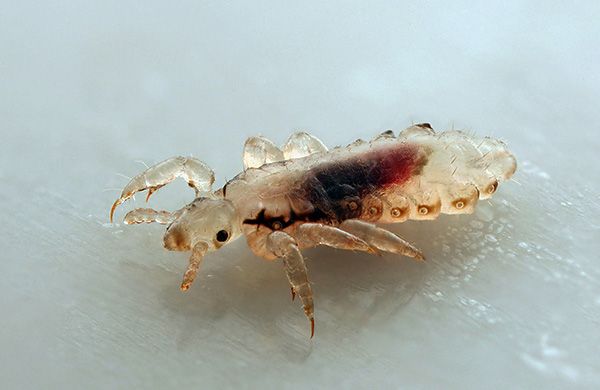

Reference: the speed of movement of linen insects reaches 30 centimeters per minute, with a large number of individuals, they will quickly fill the entire apartment and settle in upholstered furniture, in textiles.
The main habitat is the seams and folds of bed linen and clothes, especially parasites prefer to leave nits there - eggs, from which new individuals will appear in the future... Body lice can also settle in the upholstery of furniture, with which a person also often comes into contact.
Parasites begin to feed only after leaving the egg.... And if within 2-3 days he does not start feeding, he will die. The only dish in their diet is, of course, human blood. The number of "meals" is approximately 2-3 times a day, for young individuals this number can reach 8. They will in no case parasitize on domestic animals or birds. The body of these animals has their own types of lice. Therefore, the possibility of infection from them is excluded.
Danger of household insects
Body lice bites can pose a health hazard to a person.As they pass from one person to another, they become carriers of diseases. Saliva enzymes that the insect injects into the bloodstream can cause allergies. The bite sites become noticeable: these are small bluish dots on the body, forming continuous spots. Each individual drinks 0.5 mg of human blood during the day, feeding 4–5 times during this time.
If a person is allergic, then the bite of such an insect can cause him an allergic shock or other symptoms dangerous to health and life.
Itching that occurs at the site of the bite provokes scratching, and this leads to the development of infection and a worsening of the person's condition. His body temperature rises and the inflammatory process begins.
Recognize signs of bed lice damage as follows: you need to examine the human body for bites. They are localized:
- on the upper body;
- on the hips;
- in the buttocks area.
There are no bites in the groin or scalp. This arrangement of the lesion points resembles bed bug bites. But if the lice bite chaotically, then the bug bites resemble paths. Lice are not able to jump and get rid of them much easier and faster than bed bugs.
Bite sites should be treated with alcohol or soda solution so as not to infect.
To prevent body lice from pestering a person, you need to regularly monitor the cleanliness of your body and linen.
Where do bed lice come from - ways of infection
Even with the observance of hygiene of the body and at home, it is possible to pick up such bloodsuckers.... The options where the body lice came from in the apartment are not so numerous, but in many respects coincide with the methods of infection with head bloodsuckers:
- direct contact with an infected person, this can be a simple handshake or contact with his clothes;
- kindergartens or camps, where clothes often come into contact with someone else's;
- fitting rooms in stores;
- public or other people's bedding (on a train, in a hotel, etc.);
- using someone else's clothing;
- extremely rare, but infection in water bodies is possible - lice can live in water for about 2 days and move from victim to victim.
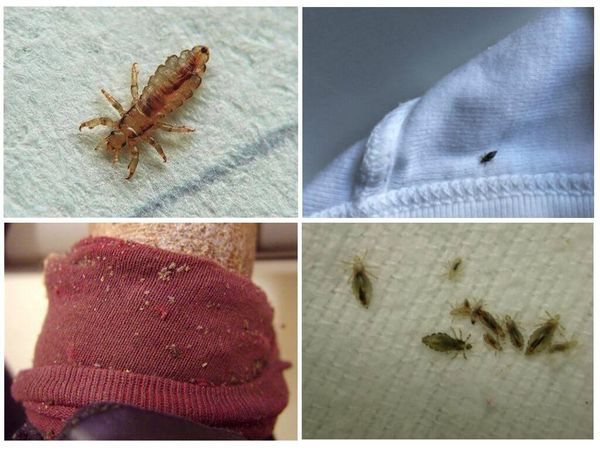

Where do linen or body lice come from?
The reasons why such lice may appear in the house are very different, and very often this does not mean that the hygiene rules are not observed at the proper level in the house. Where do linen lice come from in houses and apartments:
- Public transport (linen lice can be transmitted through clothing from another person on public transport);
- Tourist trips (Often on tourist trips, you have to share the same tent with other people, which can cause infection);
- Hotel room (linen lice can live in a hotel room and being in it there is a possibility of their transmission);
- Trying on clothes in stores (linen lice can also live in stores, so trying on clothes in them can cause the transmission of parasites);
These are far from all the ways lice appear in your home, it should be remembered that there are a lot of them on our planet and they can be transmitted to us from almost any contact with other people.
Photo of a body lice:
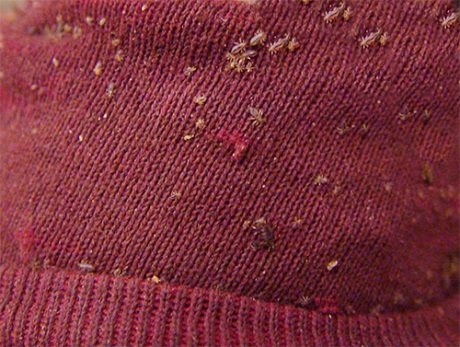

It is also important to consider the fact that linen lice are usually very hardy and able to stay out of their hiding place for a long time. Besides, lice multiply very quickly, it is enough for only a few individuals to get into a favorable environment for themselves, as they immediately begin active reproduction and after a few months, and sometimes even several weeks, their population will be very large, which can create many problems.
Nevertheless, the lice themselves do not live long, their average life expectancy is about 30-35 days, but usually this time is quite enough to lay a larger number of eggs. on average, a female is able to lay about 300 eggs in her life... Lice eggs are very small in size, most often they are attached to bedding or clothes, as they are covered with a special sticky compound.
Body lice symptoms
The main sign of infection is chaotic bites all over the body. The main thing is not to confuse them with an allergic reaction or with the bites of other insects. (such as mosquitoes or midges). Linen lice bite painlessly due to the fact that their saliva contains an anesthetic substance. When the louse "dines", a person can feel only a slight tingling sensation, which later turns into a tearing itching. The bite is a red blister with a puncture point in the center and will occur mainly in the area of the body that is in contact with the folds of clothing. As a rule, these are the back, lumbar region, arms, legs and armpits.
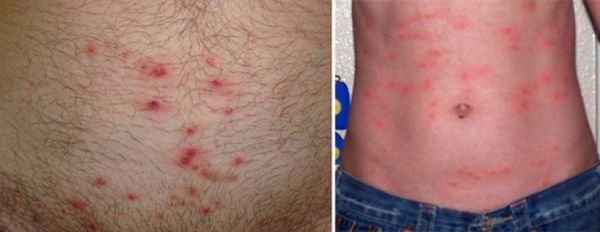

In very advanced cases, additional symptoms may appear:
- thickening of the dermis;
- pigmentation;
- the development of furunculosis;
- cyanotic swelling.
ethnoscience
For destruction, folk remedies for linen lice are also used. There are many proven methods for fighting parasites. All recipes help remove linen lice from clothes, get rid of insect marks on the body. They are also used with caution, they contain acids and alkalis. When treating the skin of a patient with head lice, the solution is applied to a small area. If there is no allergic reaction, further disinfection is carried out.
Helps well with insects:
- tar or laundry soap;
- cranberry juice;
- kerosene;
- gargle with vinegar;
- field larkspur extract;
- hellebore extract;
- a mixture of essential oils;
- decoction of herbs - wild rosemary, chamomile, string, milkweed, tansy.
Conventionally, lice that have settled in the folds of clothes, in linen, towels and other things can be called the same lice that inhabit the scalp and other parts of the body. It is at the place of infection with such parasites that the name of the lice is determined. They pose a threat to human health and serve as one of the signs of unsanitary conditions, the spread of infections and epidemics. Their methods and methods are used to destroy them.
How to deal with the parasite?
If it is precisely established that the cause of red blisters on the body is the bites of linen lice, then you need to immediately start to fight them.... The main thing is an integrated approach, that is, the processing of both the human body and all clothes, bedding. Moreover, it will get rid of parasites on the body and throughout the apartment - similar procedures. Basically, all known insecticides, of varying degrees of toxicity, are used. You don't need to think that ironing all things with steam and doing a general cleaning will get rid of lice. In almost all cases, chemical treatment is required.
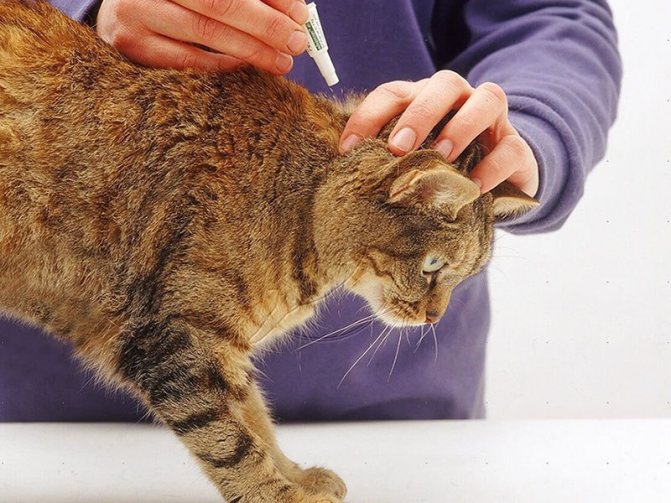

Disposal methods and remedies


In comparison with head lice, clothes, underwear is more easily removed than the fight against head lice. Moreover, you can finally destroy them even in one go (day). Among the simple ways, the easiest is to call the sanitary and epidemiological station and call a specialist who knows how to correctly, efficiently and quickly remove lice on things. However, if it is not possible to pay for such a service, then you can carry out the entire procedure yourself. To do this, you need to go through several important stages:
- Carefully remove all clothing or collect all dirty laundry (both bedding and underwear).
- Then load everything into the washing machine.
- After that, add directly to the things any insecticidal agent that is designed to destroy linen lice.
- If there are no funds, then you can add vinegar or tar soap to the washing machine, which is very cheap at a price (on average - 15 rubles).
- Washing should be carried out at the highest water temperature that is possible in the washing machine, or according to the instructions for using a pediculent substance.
- In addition, clothes can also be boiled, boiled in a basin.
- The body should be thoroughly washed with a special shampoo or cream that has a pediculative effect.
- The substance should be kept on the body for 30-40 minutes, and then everything should be washed off.
- All wounds are treated with special medicinal products - creams, lotions, oils.
- Next, clean clothes are put on the person. Moreover, it must not only be washed, but also ventilated beforehand for several days.
TOP 3 chemicals for linen lice
Our grandmothers used kerosene in such cases, but in the age of technology there are other chemical agents:
- chemical insecticide based on permethrin (trade names "NOK", "Medifox", "Pedilin"). First, things are boiled for about 20 minutes, after which one of the above means is added to the water;
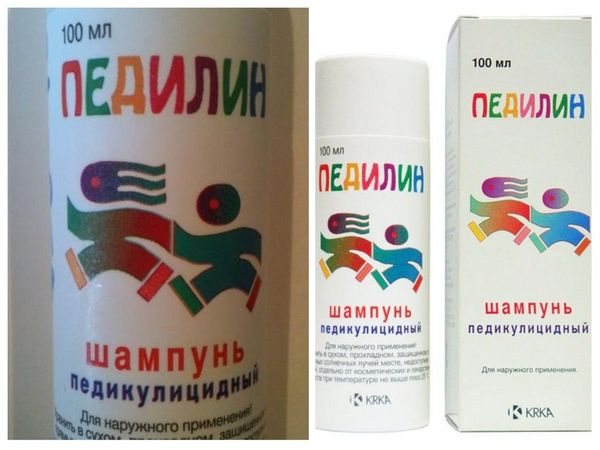

- you can use pyrethrum powder... They are treated with clothes and bedding, after which they are left in a bag for two hours. So adults will die, and if after ironing things with steam, then you can get rid of nits;
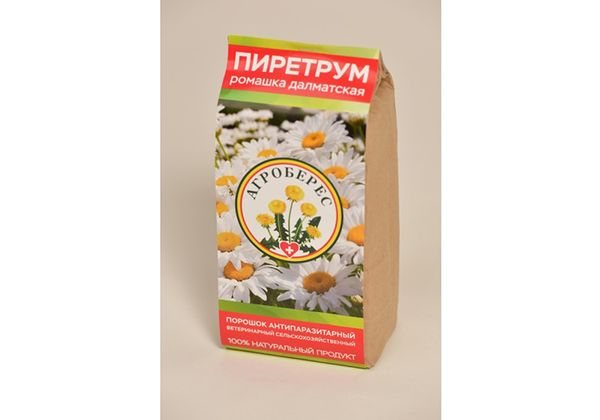

- 0.15% solution of "Karbofos" is also an effective remedy for lice... Before washing things, you need to treat them with this product.
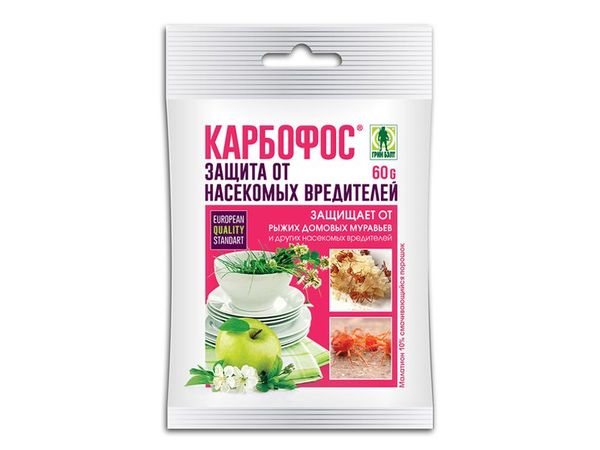

The main thing is to carry out the treatment with insecticides repeatedly, because the nits are in the seams of clothes and linen, and one application of the product does not guarantee that they will die. If the apartment is heavily contaminated, then it is better to call specialists from the SES.
Control methods
Boiling contaminated laundry
How to get rid of body lice? First of all, you need to thoroughly wash yourself under a hot shower using laundry soap. Then put on clean clothes and change the bedding.
There are different ways to treat lice from linen:
- Boiling personal wardrobe items. For guaranteed disposal of parasites, you can add permethrin, microfos, karbofos.
- Treatment of things with special aerosols. Insecticidal preparations (karbofos, carbosol, soap-kerosene emulsion) are rarely used now. Pay special attention to mattress seams, pillows, including sofa ones.
- Freeze for several days.
- Contacting the disinsection department of the Sanitary and Epidemiological Service.
- Machine wash at high temperature.
- Rinse washed or boiled clothes in water acidified with vinegar. Iron the dried items thoroughly with a hot iron. When ironing, give emphasis to seams, collars, folds, cuffs.
- Steam generator and steam-formalin boxes.
- Dry-cleaning of feather pillows, outerwear.
- Drying laundry for several days in the sun after boiling.
From folk remedies, you can offer cranberry juice to lubricate bite sites and dried tansy, which is laid out on bed linen. You can use dry bundles of fern, milkweed, wormwood, which are used to shift bedding and underwear.
It is better to use processed things a week after processing, since nits will die during this period.
Despite their hardiness, linen lice have several vulnerabilities in the development cycle. First of all, it is sensitivity to humidity, and secondly, strict requirements for temperature conditions during the breeding season. Any deviations from the optimal temperature of 300C lead to a decrease in the fertility of the parasites. This helps you understand how to protect yourself from head lice.
Washing, ironing and drying
How to remove linen lice at home with primary infections? Compliance with general rules of hygiene, washing clothes at high temperatures and then drying them in the fresh air and ironing them is the best way to prevent infection or eliminate primary infections. Having missed the moment the insects appear in your apartment, it will be much more difficult to correct the situation.
When choosing a remedy for linen lice, consider the form of its release. Various sprays or concentrated solutions for spraying are most convenient for this type of insect).
- First. It involves the use of insecticidal sprays (for example, Nyuda remedy for lice, which is used as a means of fighting all their types), concentrated liquids (for example, medifox, reviews from lice of which indicate its high effectiveness) or powders (such as methylacetophost or pyrethrum) ...
- Second. Soaking clothes and linen. This is one of the oldest and most proven methods for which lice dust has been used for a long time. It should be noted that this lice killer poses a risk to human health and must therefore be used with all the prescribed precautions.
- The third. Body protection. Among the effective repellants that help protect yourself from lice bites is tar body soap. The smell of tar is not tolerated by most insects, in addition, tar soap can effectively relieve itching from already inflicted bites, which makes this simple remedy indispensable for travel.
- Fourth. Assumes washing in boiling water or boiling. At this stage, no special preparations are required - high-quality washing powders are used. After washing, the laundry is air dried and steam ironed to ensure the complete destruction of lice and their nits.
Another way to heat-treat contaminated clothing against linen lice is to freeze it for three days. This method is most convenient for processing clothes after business trips, travels or their purchase in the market or second-hand in the winter. After washing in hot water, the clothes are hung out in the cold and not removed for three days.
The use of powders assumes that the clothes will be sprinkled with them and kept in closed plastic bags for 1-2 hours. A popular alternative to this method is the use of chamomile powder - pyrethrum or bitter wormwood.
As for the most effective remedies, in the case of linen lice, this issue is not so relevant, since they are very sensitive to most of the existing anti-pediculosis drugs. The metabolism of related species of lice is similar, therefore, the same substances effectively act on them. It makes no sense to look for the strongest lice remedy to cope with their underwear variety.
We suggest that you familiarize yourself with: Lice where you can get infected
Among modern drugs, the following are most popular:
- Spray Nyuda from lice (based on dimethicone). Its feature is the mechanical effect on insects - parasites. Getting on the surface of their bodies, and in the respiratory tract, it quickly forms a film impermeable to external influences and displaces oxygen. Having lost the ability to breathe, lice die. Dimethicone, a mixture of two silicone oils, is widely used in medicine as a component of remedies for the treatment of the digestive system, and is also a component of many perfumery products. Release form - spray, Exposure from 15 to 45 minutes, depending on the degree of infection.
- Means "Pair plus". The active ingredients - malathion, permethrin and peperonyl butoxide - are effective insecticidal agents of mild action. To combat linen lice, a spray is used, which is applied to places where insects accumulate until they are completely destroyed.
- Lice paranormal based on the white mineral oil Clearol with the addition of a perfume composition. The active ingredients are essential oils, which provide a mild effect and the ability to use allergy sufferers and small children for linen.
- Full Marks lice remedy, the active ingredients of which are the effective and safe insecticides cyclomethicone and isopropyl myristate. It is used for children at least 5 years old.
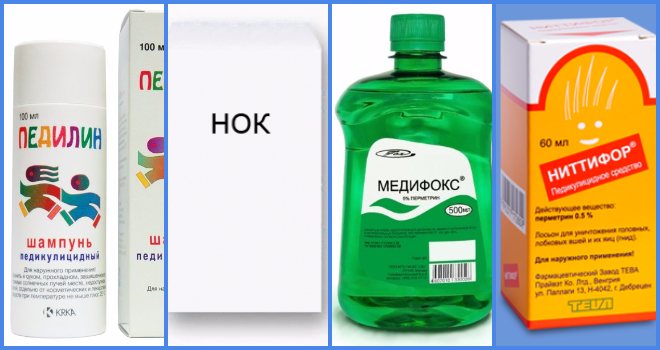

All of these methods of dealing with linen lice are most effective at the stage of primary infection. By preventing insects from multiplying and settling in your home, you will avoid the need to call specialized services to destroy them.
There are many ways and tips on how to get rid of linen lice quickly and easily. If you suspect the presence of these insects, you need to take the hottest shower possible. The body must be washed with ordinary laundry soap containing alkaline substances.
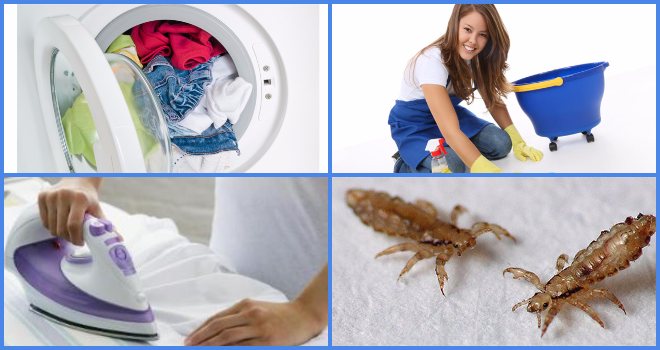

Cleaning, washing in hot water and ironing with steam will help get rid of lice and nits
In addition, it is imperative to thoroughly disinfect absolutely all bedding. To remove linen lice from bedding and wardrobe items, you need to soak everything in a 20% solution of kerosene and ordinary laundry soap. Things should be in this solution for about 40 minutes.
Freshly squeezed cranberry juice will help to remove nits. Juice should also be used to treat areas of the skin where significant itching occurs.
All items must be thoroughly boiled. After boiling, they need to be spread out on the window so that direct sunlight gets in, and so everything should be left for several days.
Linen lice lead a secretive lifestyle, hiding not only in the folds of clothes, but also in bedding and upholstered furniture.
The linen louse lives without food for 7-10 days, after which it dies. The main way to get rid of linen lice at home is based on this feature. The fight against parasites should be complex, since sometimes this species lays nits on the vellus hair of the human body. Finding them on the body is difficult and easier to carry out a total processing of the apartment and things.
Insecticides
You can quickly remove linen lice from upholstered furniture: a sofa, armchairs, ottomans - using household insecticides. But you need to process it carefully and every day. Conventional insecticides do not work on the eggs of the parasites, from which new lice can hatch.
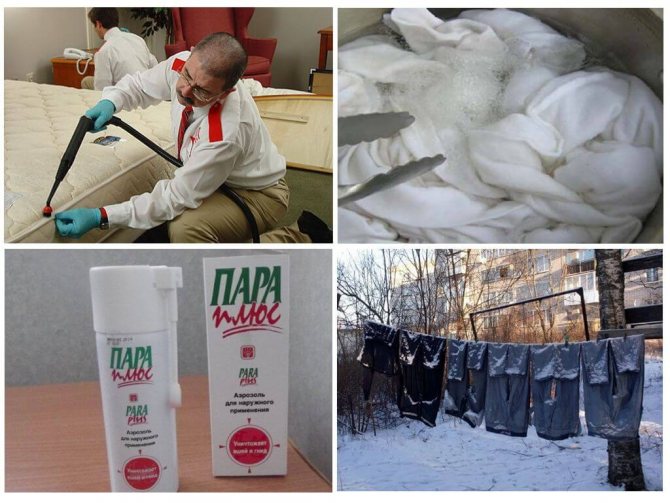

Destruction of parasites
The body is treated with lice products purchased from a pharmacy. This can be a spray, anti-lice shampoo, or tar soap. There are a lot of mild drugs that do not harm either the skin or human health. In the pharmacy, you can find products such as Nyuda, Para-Plus, Paranit, Nix or Full Marks, the action of which is based either on mild insecticides or on essential oils.
Knowing at what temperature lice die, they are removed from things using heat or cold. Parasites die at temperatures of 60 ° and above and at -15 ° and below. Things that can withstand high temperatures are boiled or fried with an iron. Others are tied up and placed in the freezer for a week. In winter, you can hang it outside.
Hunger strike
Contaminated clothing is placed in a plastic bag and not worn for 3 weeks. Then they are washed to wash off dead insects.
Fighting linen lice is much easier and easier than treating head lice. It is enough to be attentive to the appearance of an incomprehensible itchy rash on the body and periodically ventilate the clothes.
TOP 3 folk remedies against the parasite
At a time when they did not know about any chemistry, they used improvised means. Here is some of them:
- tar soap - perfect for hygiene procedures, it has antiseptic properties and eliminates itching;
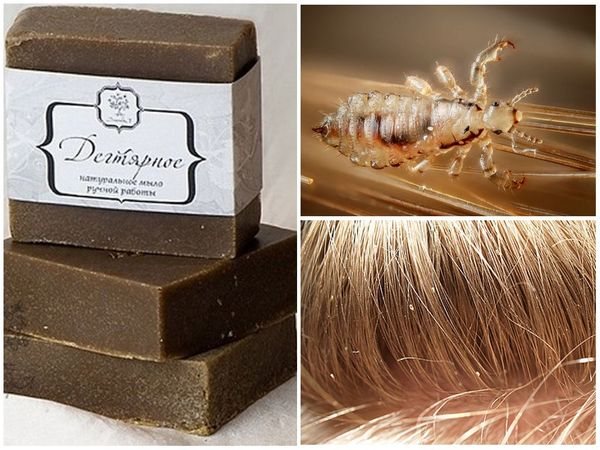

- acetic acid - will help remove lice, but will not destroy nits (for this purpose, you can use cranberry juice, which contains a lot of acids);
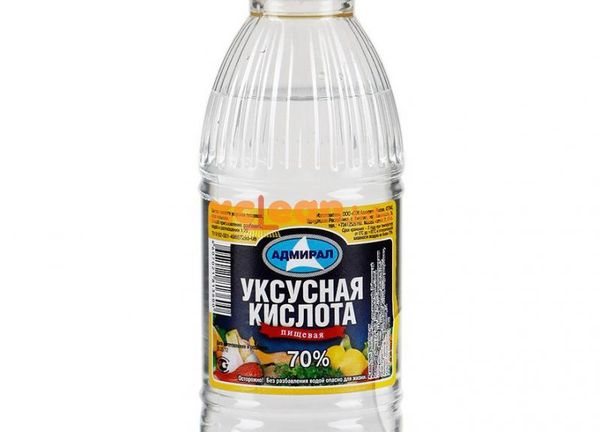

- turpentine - it is most often added to water for floor treatment;
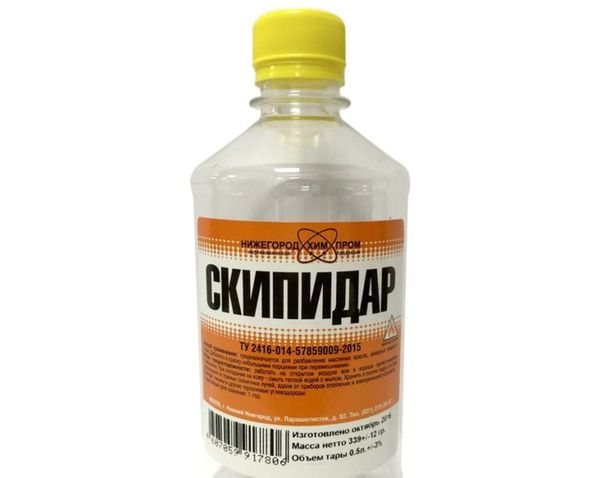

What does a linen louse look like?
Many have seen a head louse, and have at least a vague assumption:
- an elongated body with a clearly defined head and powerful legs;
- small antennae;
- body length of adult insects: 2-3 mm, offspring 0.5-1.5 mm;
- body color is light, after feeding - red, brown.
Since these are representatives of the same species, they are similar in appearance. The linen lice in the photo look almost the same as the head lice. Everything, including size and color, is practically indistinguishable. The main difference is the paws: linen lice cannot be reliably fixed in the hair, but they move confidently over a wide variety of fabrics. Most of all they chose cotton and linen, but they strongly dislike silk and other slippery fabrics. This parasite will not start in woolen products, because a person does not wear them on a naked body.
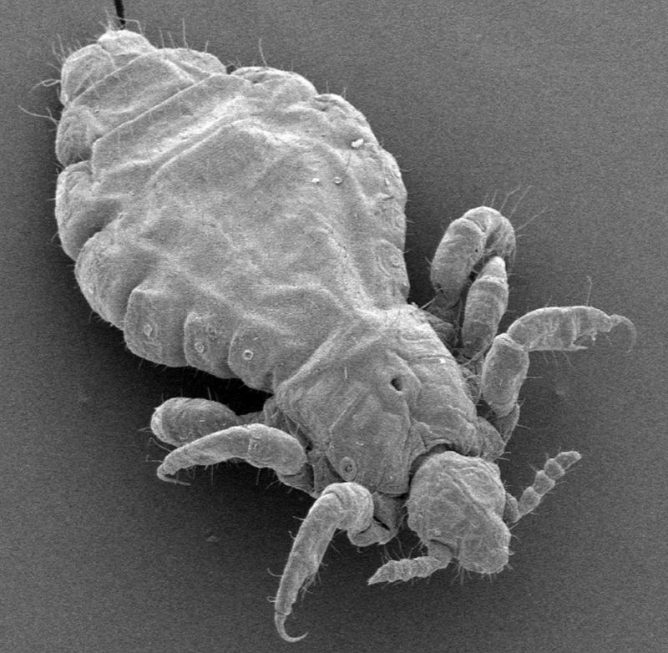

Prophylaxis
No one is immune from lice infestation, but some actions will help protect against such a case:
- it is advisable to avoid contact with asocial individuals and premises with unsanitary conditions;
- in case of acquiring things from hands, it is imperative to wash in hot water;
- after traveling by train or staying at a hotel, you need to wash thoroughly, and wash clothes at a high temperature, and then steam them.
Do not tempt fate and expose yourself to infection. But if it did happen, then there is no need to rush into panic. The main thing is to find parasites in time, be patient and take a responsible approach to getting rid of them.
- about the author
- VK profile
Why are parasites dangerous?
Not only rashes, itching are potential troubles after the appearance of lice. Insects are carriers of various diseases:
- typhus;
- relapsing fever;
- trench fever.
Previously, these diseases led to the death of many people. Today it is possible to cope with diseases, but you need to go to a specialist as soon as possible. First symptoms:
- a sharp increase in temperature;
- Strong headache;
- vomiting.


If you have a high fever, headache, or nausea, be sure to see a doctor.
If symptoms appear a couple of days after the onset of the bites, see a specialist immediately for help.
How lice bite and why they drink blood
A louse enlarged with a magnifying glass is not a sight for the faint of heart. The insect's mouth apparatus is a kind of stiletto, enclosed in a retracted soft tube. During a meal, the piercing-sucking proboscis is pulled out of the head capsule and, being pulled into the hole, works according to the principle of a pump, after which it returns to its original position.
The salivary glands produce specific saliva with anticoagulin properties, which the parasite generously injects into the wound. The substance prevents blood clotting, but at the same time causes irritation of the victim's skin after a bite.
Lice of all types and developmental stages feed exclusively on blood. They simply cannot swallow anything else. The stomach of one adult holds about 1 ml of blood. The hungry louse is saturated from 3 to 10 minutes, and already at the fourth minute, the blood that has filled the gastrointestinal tract of the parasite begins to leave through its anus.
Adequate nutrition is the most important condition for intensive reproduction and rapid development of parasites. Without constant access to warm human blood, insects weaken and die. For example, here's a table:
| Habitat conditions | Temperature | ||
| + 30 degrees | + 20 degrees | + 15 degrees | |
| Without access to blood (humidity conditions) | 3-5 days | 3-6 days | 4-5 days |
| No food in dry air | 48-72 hours | 48-72 hours | 4-5 days |
Bedbug as a threat
If the adult inhabitants of the house or children are bitten by a bug at night, characteristic marks remain on the body, which are quite difficult to confuse with any other skin lesions. The track of marks mainly on the back, thighs, buttocks causes severe itching and becomes a source of irritation. In addition, in the course of its life, the pest emits a very specific smell, by which the appearance of bedbugs can also be detected over time.


It is important to understand: it is impossible to get rid of the insect without the use of modern means and technologies for pest control. The vital features of bedbugs do not imply the possibility of poisoning them through food or water.
Blood-sucking insects easily hide under wallpaper, inside furniture, household appliances, they can live in children's plush toys, upholstered furniture, mattresses. The further the situation goes, the more difficult it will be to completely get rid of the pests. And only professionals have available drugs and technical means that can radically change the situation.
Recognize body bites
To be sure that a person was bitten by body lice, you just need to look at the nature of the location of these red dots on the body. Since these bloodsuckers do not jump or fly, but crawl, traces in the form of a track will remain on the bitten areas. If fleas, for example, leave bites scattered throughout the body, then chains of such bites will remain from lice.
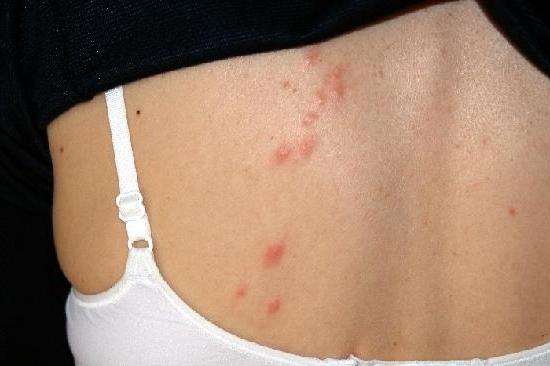

Most often, relapses occur exactly where clothes come into contact with the body, inside which (or on the seamy side) lice live. As a rule, these are places of suture and other folds, inner seams of pockets, folds, collars, cuffs and other areas. This is especially true for clothes made of linen, cotton and wool. Also, such inhabitants like to live in other things made of fur or knitted fabric.
Reproduction
A single mating of adults leads to the complete insemination of all the eggs of the female, which will be able to lay more than hundreds of nits for the rest of its life. Re-pairing is not required.
Within a few hours after insemination, the female begins to lay eggs, fixing them on the hair, about 2-5 pieces per day.
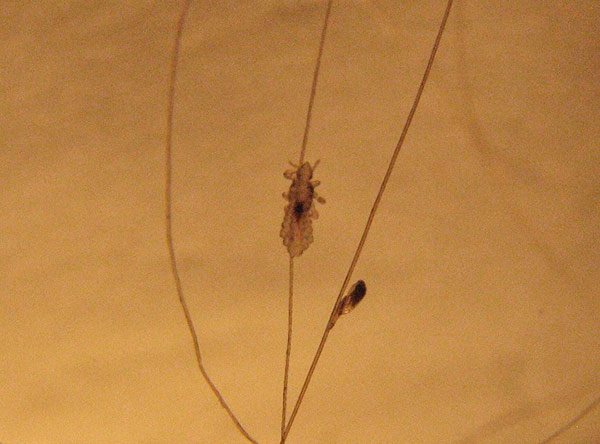

The louse lays eggs on the hair
After 7–11 days, the upper lid of the egg bursts and the nymph hatches. She begins to suck blood almost immediately after hatching, due to which it reaches maturation in 8 days. If the louse does not find a food source, after about 18 hours it loses its ability to suck blood due to dehydration and dies.
Causes of appearance and ways of infection
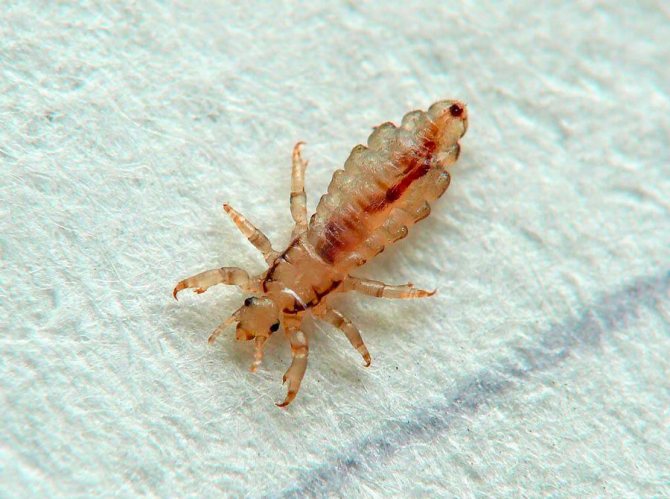

Typically, lice appear in one person as a result of contact with another person who has lice. This process can take place in places where a lot of people congregate. Such places are considered to be places of temporary residence, where poor living conditions are noted.
Lice can be picked up:
- In hotels, especially cheap ones.
- In stores when clothes are tried on.
- In public transport.
- In summer camps.
- Away.

